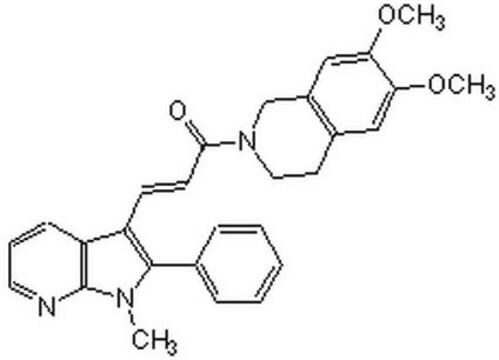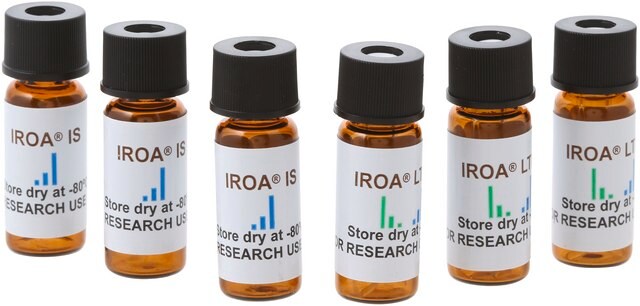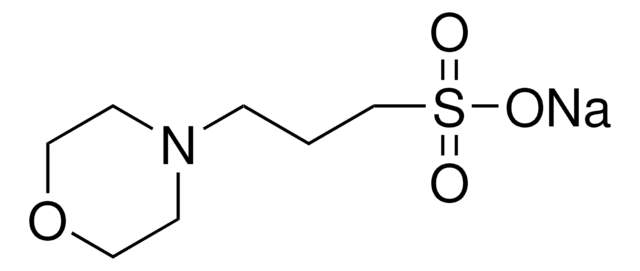EPI006
Histone Deacetylase 8 (HDAC8) Activity Assay Kit
100 assays in 96 well plates
Se connecterpour consulter vos tarifs contractuels et ceux de votre entreprise/organisme
About This Item
Produits recommandés
Utilisation
100 assays in 96 well plates
Numéro d'accès NCBI
Conditions d'expédition
wet ice
Température de stockage
−20°C
Informations sur le gène
human ... HDAC8(55869)
mouse ... HDAC8(70315)
Description générale
HDAC8 (histone deacetylase 8) is a class I enzyme, that has 377 residues and it lies between class I and class II HDACs. This gene is located on X chromosome. It consists of a single α/β domain, in which eight parallel stranded β sheets are sandwiched between 13 α helices.
Histone deacetylases (HDACs) are a large family of enzymes that remove acetyl groups from histone proteins. Site specific histone acetylation and deacetylation have been shown to activate or repress eukaryotic gene transcription, respectively, and as a consequence, it plays a crucial role in mammalian development and disease. HDACs are involved in important biological activities, such as cell differentiation, proliferation, apoptosis, and senescence.
With Sigma′s HDAC8 Activity Assay Kit, HDAC8 present in a test sample will act with the supplied Developer, to deacetylate and then cleave the HDAC8 Substrate (R-H-K(Ac)-K(Ac)-AFC). This activity will release the quenched fluorescent group, AFC, which can be detected at Em/Ex = 380/500 nm. Trichostatin A is an HDAC inhibitor included in the kit to verify HDAC8 activity. The kit provides a rapid, simple, sensitive, and reliable test. It is suitable for either individual tests or high throughput assays, from nuclear extracts, purified, or immunoprecipitated HDAC8, and from native, recombinant, or genetically modified HDAC8.
With Sigma′s HDAC8 Activity Assay Kit, HDAC8 present in a test sample will act with the supplied Developer, to deacetylate and then cleave the HDAC8 Substrate (R-H-K(Ac)-K(Ac)-AFC). This activity will release the quenched fluorescent group, AFC, which can be detected at Em/Ex = 380/500 nm. Trichostatin A is an HDAC inhibitor included in the kit to verify HDAC8 activity. The kit provides a rapid, simple, sensitive, and reliable test. It is suitable for either individual tests or high throughput assays, from nuclear extracts, purified, or immunoprecipitated HDAC8, and from native, recombinant, or genetically modified HDAC8.
Actions biochimiques/physiologiques
HDAC8 (histone deacetylase 8), with the help of PKA (cyclic AMP-dependent protein kinase A) plays a major role in confirming the acetylation state of histones. This protein may also plays an important role in acute myeloid leukemia (AML). Suppression of HDAC8 by RNA interference stops the growth of lung, colon, and cervical cancer cell lines.
Caractéristiques et avantages
- Simple, sensitive, and reliable assay
- Utilizes fluorometric methods
- Sample type: cell and tissue lysates, plasma and serum, other biological fluids
- Species reactivity: mammalian
- Suitable for individual tests or high throughput assays and kinetic studies
- Suitable for high throughput measurement of HDAC8 activity in purified, immunoprecipitated, and recombinant or genetically modified HDAC8 samples
- Convenient 96-well microplate format
Produit(s) apparenté(s)
Réf. du produit
Description
Tarif
Code de la classe de stockage
10 - Combustible liquids
Classe de danger pour l'eau (WGK)
WGK 3
Point d'éclair (°F)
188.6 °F - closed cup
Point d'éclair (°C)
87 °C - closed cup
Certificats d'analyse (COA)
Recherchez un Certificats d'analyse (COA) en saisissant le numéro de lot du produit. Les numéros de lot figurent sur l'étiquette du produit après les mots "Lot" ou "Batch".
Déjà en possession de ce produit ?
Retrouvez la documentation relative aux produits que vous avez récemment achetés dans la Bibliothèque de documents.
Crystal structure of a eukaryotic zinc-dependent histone deacetylase, human HDAC8, complexed with a hydroxamic acid inhibitor.
Vannini A, et al.
Proceedings of the National Academy of Sciences of the USA, 101(42), 15064-15069 (2004)
Structural snapshots of human HDAC8 provide insights into the class I histone deacetylases.
Somoza JR, et al.
Structure, 12(7), 1325-1334 (2004)
Ji Heon Noh et al.
Cancer research, 74(6), 1728-1738 (2014-01-23)
Aberrant regulation of histone deacetylase 2 (HDAC2) contributes to malignant progression in various cancers, but the underlying mechanism leading to the activation of oncogenic HDAC2 remains unknown. In this study, we show that HDAC2 expression is upregulated in a large
Astrid M Kral et al.
Biochemistry, 53(4), 725-734 (2014-01-24)
Histone deacetylases (HDACs) play diverse roles in many diseases including cancer, sarcopenia, and Alzheimer's. Different isoforms of HDACs appear to play disparate roles in the cell and are associated with specific diseases; as such, a substantial effort has been made
Johannes Gräff et al.
Cell, 156(1-2), 261-276 (2014-01-21)
Traumatic events generate some of the most enduring forms of memories. Despite the elevated lifetime prevalence of anxiety disorders, effective strategies to attenuate long-term traumatic memories are scarce. The most efficacious treatments to diminish recent (i.e., day-old) traumata capitalize on memory updating
Notre équipe de scientifiques dispose d'une expérience dans tous les secteurs de la recherche, notamment en sciences de la vie, science des matériaux, synthèse chimique, chromatographie, analyse et dans de nombreux autres domaines..
Contacter notre Service technique







